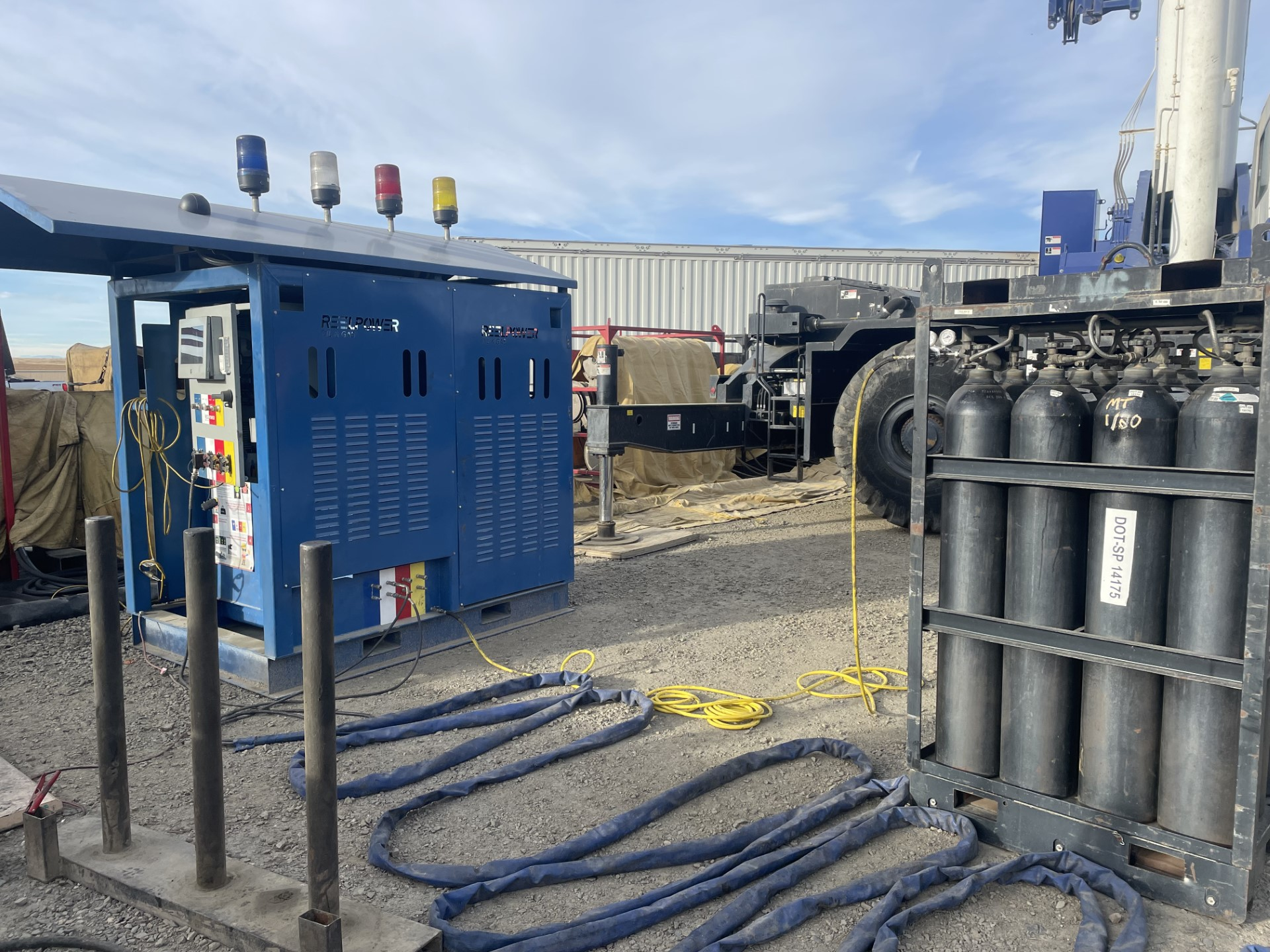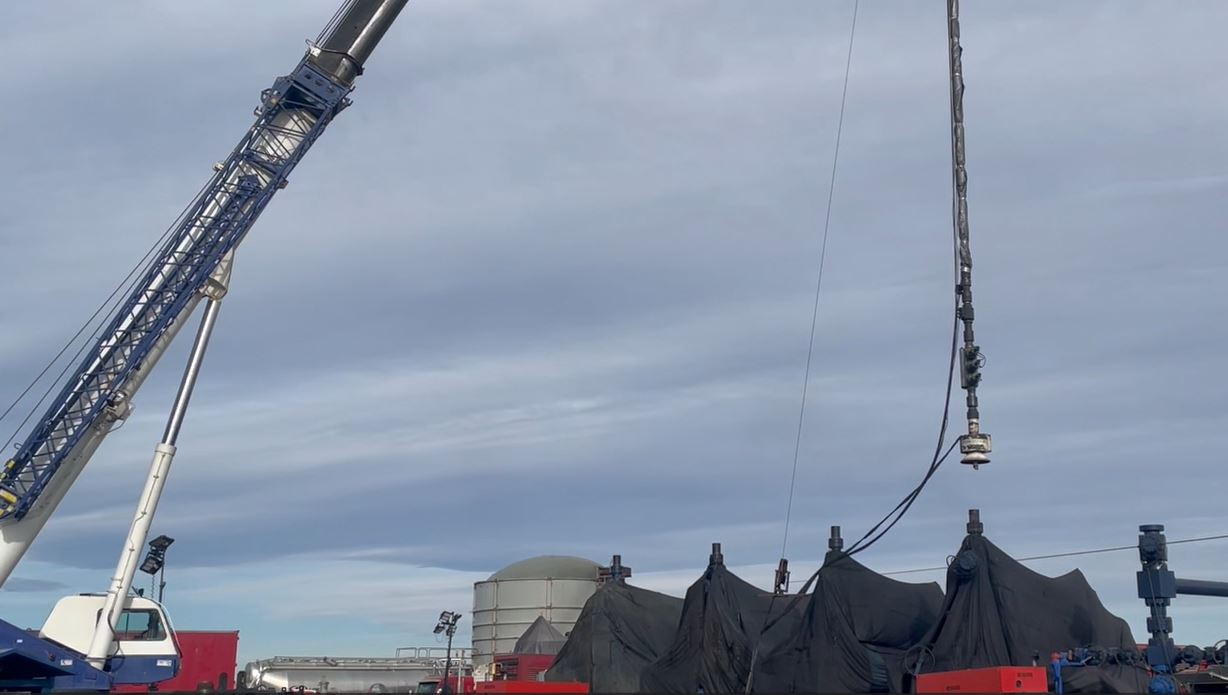The remotely operated Loc-Torus II (LTII) Hydraulic Frac Connector is specifically designed to lower operating costs and improve safety for the high demands of hydraulic fracturing applications. The LTII remote connector provides a secure connection between the wireline pressure control and the crown valve. The remote operation allows connecting/disconnecting the wireline pressure control equipment and wellhead remotely without personnel entering the high-pressure danger zone. This allows the pressure pumping to continue while the wireline tool string is removed and perforating guns are changed out on multi-well zipper operations.
The patented LTII remote connector system uses compressed air to actuate the connector system. Compressed air is superior to hydraulic systems because it can be powered by 110V/1 phase power source, cleaner and safer than hydraulics and provides faster reaction time. The redundant, on-board air compressors on the LTII control system doesn’t require other maintenance associate with hydraulic systems. Plus, when all else fails an on-site portable compressor may be used to operate the connector, which is much more difficult with hydraulics. The packages standard compressed air system is provided with desiccant dryers that are effective down to about 0 deg F.
When Reel Power entered the Colorado basin and needed a solution for temperatures down to – 15 deg F and colder, a new system was required. A regenerative air dryer was considered, which could remove moisture from the air down to -40 deg F, but the regenerative air dryer required more maintenance plus redundancy, given the company’s design criteria of having all components redundant on each wellsite.

The Reel Power engineering team identified nitrogen as a reasonable alternative. Bottled Nitrogen is very low in moisture content, down to -94 deg F dewpoint, clean, widely available within the US and inexpensive.
This solution solved the challenge and the standard LTII control skid is very easy to switch over to nitrogen. A regulator with 50 ft of hose is provided to regulate nitrogen pressure down to about 150 psi and connect nitrogen bottle to the air drain port on the control skid. The air compressors are disabled, during the colder months (or days) when nitrogen is used.

The volume of nitrogen required to actuate the remote connector is relatively small and a bank of twelve bottles was calculated to last about 3-4 weeks assuming 12 stages per day are completed; the bank will last longer if less stages are completed, as the connector will be cycled less. A spare bank of nitrogen is located on the well pad. Once the bank of bottles being used is depleted, the operator simply connects to the spare bank of nitrogen, then notifies Reel Power and a replacement, full bank will be delivered in a short amount of time.
The operator will be aware when the nitrogen is getting low for a given bank because each of the twelve (12) bottles in a bank of nitrogen has a discharge needle valve. They will get down to the last bottle, then alert Reel Power, and a full bank will be delivered prior to or just after switching over to the spare bank on location.
With this addition, the Reel Power LTII connector system can operate without reduced actuation speed down to -40 deg F and below. The LTII control system controls the nitrogen to the connector, maintaining all the redundant safety features that the control system offers.
This solution offers significant advantage to other systems that use hydraulic fluid in the colder regions, such as Colorado, Wyoming and North Dakota. Hydraulic fluid can really slow down in these subzero environments, effecting connector speeds, engine and hydraulic power unit performance. The cold weather increases the viscosity of hydraulic fluids which means that the fluids will take longer to circulate through the system and lower their ability to protect against wear and tear. The ultra clean and dry nitrogen solves all of these issues and allows for a smooth-running operation in the harshest environments.


